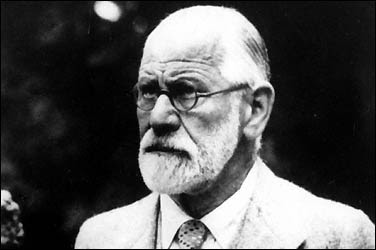
by Miné Salkin | Jan 19, 2009 | film stripped
“It’s true! Vagina dentata! Vagina dentata! Vagina dentata!”
Someone on the bus the other day was talking very loudly about a film where the main character had teeth in her vagina. Intrigued, I later discovered on an IMDB search that he was referencing Mitchell Lichtenstein‘s (son of Pop-Artist Roy) 2007 film Teeth. After watching the disturbing movie, it had an interesting effect of combing classic mythology with the modern woman becoming empowered by self-acceptance.
It blurs the lines between the power of female revenge, the idea of women as objects of violence, retribution, and the age-old phenomenon of gynophobia. Toting the tag line that “Every rose has its thorns,” Lichtenstein shows how women can be very scary things indeed.
The story is centered around Dawn O’Keefe (Jess Weixler), who is going through the normal growing pains of adolescence. Like her name represents the promise of a new day, Dawn remains abstinent despite the increasingly inappropriate sexual encounters she is subjected to by her stepbrother, stepfather, and the brutally intrusive gynecologist. Caught somewhere between a horror and a comedy, the hybrid genre adds a surrealistic tone to the realities of rape in America, and modern misogyny.

Sex changes everything
According to the Rape, Abuse & Incest National Network (RAINN), 60% of sexual assaults in America are not reported to the police. Maybe movies like this will deflate that horrifying statistic, or at least give sexually abused women the power they need to speak out.
The bildungsroman of the film is when Dawn realizes that she has power over the men in her life because she is the potential object for violence. Enshrouded by the veil of “the other” she is able to retaliate because men just don’t understand her, and are too ignorant to ask. Not only that, but she has incisors in her vagina that grind mechanically, involuntarily, at any time that she is penetrated.
As Hélène Cixous wrote in the Laugh of the Medusa (1976), it is the riveting story of two horrifying myths: the Medusa and the abyss. The woman and her mystery. Instead of trying to understand it, men fear it. “The phallologocentric sublation is with us, and it’s militant, regenerating the same old patterns, ” which in this case, is the dogma of castration.
“The toothed vagina appears in the mythology of many and diverse cultures all over the world. In these myths, the story is always the same. The hero must do battle with the woman. The toothed creature can break her power,” Dawn explains.
So it seems like the best thing for a man to do is to try to get to know a girl first. If it’s fear of the unknown, the incalculable, or the general mysterious aura of a woman, it’s a good idea to say “please.”

by Miné Salkin | Jul 12, 2007 | Uncategorized

freud: revolutionized psychoanalysis but had little science to back it up
In the selection “Medusa’s Head,” psychoanalyst Sigmund Freud fleshes out his interpretation of the mythological image as a deep-seated sexual issue, stemming from the human fear of their mother’s genitals devouring their own. In his analysis of the metaphorical representation of female genitalia, Freud sheds light onto the paradox of heterosexual male desire – a force which is both terrifying and undeniably attractive. Despite the comical effects and his persuasive argumentation, Freud’s assertions ultimately fail to explain the complexities of human sexual relations, as they gravitate around an ignorant male view of women’s sexuality.
For Freud, sex is attached to an unspoken, irrational fear of castration, where the vagina represents a vortex of simultaneous pleasure and horror. In the style of third person narrative, Freud creates a situation where the “other” is identified – in this case, the body of the female, represented by Medusa’s decapitated head is the center of alterity through the mystification of female sensuality. Instead of exploring the idea of its multiple possibilities, Freud articulates one, monolithic, uniform kind of female sexuality. From this position, Freud is failing to substantiate his arguments, as they are clearly seen to stem from impossible fears, and a blatant lack of understanding the fairer sex.
Mystifying the organs of female sexuality have both an amusing and a maddening effect – Freud attaches the fear of castration in sex to a boy’s glimpse of his own mother’s vagina. Yet where does this fear originate? Freud lacks an explanation for how anyone would even associate sexual pleasure with the possibility of losing one’s penis. Perhaps the most absurd tenet of his interpretation of Medusa is the idea that the snakes in her hair are “a confirmation of of the technical rule according to which a multiplication of penis symbols signifies castration.” The only technical rule which could be applied to Freud’s argumentation is that he defies every epistemological convention.
In short, Freud lacks understanding in the issue of sex – particularly of the female persuasion. However, his interpretation of the myth of Medusa and her sexual evaluations brings another, more philosophical issue to the surface. It is the displacement of social values which creates a dichotomy of sensuality: the ignorance towards the female body and its responses to sexual desire in turn becomes a symbol of both desire and fear, and even possibly hatred. According to Freud, the sight of Medusa’s head (and therefore the sapphic images associated with it) makes the man “stiff with terror…” yet at the same time “offers consolations… he is still in possession of a penis, and the stiffening reassures him of the fact.” This line is particularly absurd, since the spectator has an erection, how could he have ever feared for the loss of his member?
Ergo, Freud’s exploration of female sexuality through the literal and figurative interpretations of power in the myth of Medusa creates more ignorance on the topic instead of clarifying it. Even in this short selection, an envious, fearful misogyny resonates in this analysis. It is perhaps due to the social repression of women at this time in history that causes them to be “othered” to the point of being recognized as either a symbol of sexual desire, fear of castration, or both.



